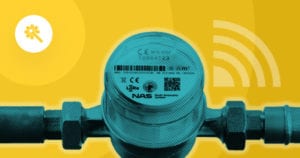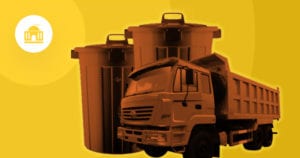
We have to come to terms with the fact that the world is going to be a very different place after the COVID-19 pandemic. Are we dealing with a virus that goes away once the antibodies defeat it? Are we looking at a chronic infection like HIV or hepatitis? And if it’s chronic, can carriers infect others even while not showing symptoms?
So far, scientists are optimistic and believe that once a carrier is healed, they don’t have to worry about the virus anymore, but they are the first to admit that they might be wrong. We simply don’t know enough.
Adding to the uncertainty of the virus, we also have to deal with the fact that no economy can handle a long-term lockdown. Every government is already looking for a way to loosen the restrictions without risking a second wave of infections.
Companies are cutting costs and going digital. At its worst, that means downsizing and letting go of staff. At its best, hiring the services of software development consultors to adapt their systems to a virtual office environment.
Whatever strategy companies and cities take, they have to do it thinking in the long term. A year-long lockdown might be not feasible, but experts believe that social distancing is here to stay, at least until 2022.
Tracking with Smart Cities and Apps
Smart cities are one of the most ambitious projects based on IoT-tech. A single network infrastructure connecting everything from streetlights to citizens is the gateway to an unprecedented amount of data gathering.
Seoul, the capital of South Korea, is a prime example of a city well in its way to become a smart city, and also a fine example of just how powerful IoT technology can be in managing the pandemic.
On March 16th, South Korea launched a new system based on its “Smart City Data Hub” infrastructure. With it, epidemiological researchers can quickly gather and confirm coronavirus cases as well as potential vectors of transmission. A process that is usually extremely slow and time-consuming.
With the help of real-time data gathering, South Korea has been able to lower the count of new daily cases from 900 to less than 90, as well as bring down the mortality rate to less than 1%. And all of that without having to rely on lockdowns and travel bans.
Since South Korea’s system automatically cross-references the epidemiological data with home and work addresses, healthcare professionals have a very clear idea of where and how they should focus their resources to avoid the spread of the virus.
In comparison, Google and Apple, amidst a firestorm of criticism, are implementing a Bluetooth contact-tracing system that serves a similar function, alerting the user if they had contact with a confirmed COVID-19 carrier.
The catch is that, compared to its smart city counterpart, these apps require the carrier to flag themselves on the app, something not everyone is willing to do. Also, there is the concern of just how much personal information can people gather from the Bluetooth signal your smartphone is sending.
Changing the Landscape of Healthcare
Just because we are all thinking about COVID-19 doesn’t mean that other diseases and conditions have gone away. Healthcare systems are trying to find a way to still tend to every patient while dealing with the pandemic.
Telemedicine has always had a lukewarm reception, but with the way things are right now, more and more doctors are recommending pre-screening patients through apps before having them go to a clinic.
MaNaDr, for example, is a telehealth app from Singapore that has been used by more than one million patients. Healthcare professionals make a diagnosis based on the symptoms reported by the patients and recommend a course of action, including sending an ambulance to pick them up, if the case requires it.
In unison, we are seeing a rise in healthcare IoT solutions around the world. In the USA, smart devices are gathering dozens of body metrics, such as blood pressure and heart rate, from people’s homes and uploading them to a cloud. These services alert doctors when the values of a patient are abnormal.
In a bigger context, these metrics are being fed to AIs that are making predictions based on patterns. For example, a spike in the average body temperature of a community might be signaling the outbreak of a disease. So health care professionals and other interested parties might focus their attention on these communities.
Automatization and the Future
The biggest concern for companies is finding ways to keep the workflow going, and IoT is going to play a big part in the coming months. Data is showing that while the interest in IoT solutions decreased during the first couple of months of the pandemic there has been increased investment in IoT retrofit solutions.
We could argue that the lack of interest didn’t have anything to do with the IoT itself, but rather companies taking a wait-and-see approach until they understood what they had to deal with. The surge of retrofitted tech is indicative of a market that’s looking at automatization and connectivity that can be quickly deployed.
Retrofitting is far from perfect though. Most people have a specific set of needs that might not necessarily mesh well with a prepackaged product. We will probably see a spike in software development consultants offering tailor-made automated solutions in the coming months.
If we have something to learn from history is that technology has always been a strong ally against pandemics. We are adapting to a new world with a lot of unknowns, and IoT might just be the piece that we need to solve this puzzle.




 Related Podcast Episode
Related Podcast Episode




 Related Applications
Related Applications



 Latest IoT News
Latest IoT News







